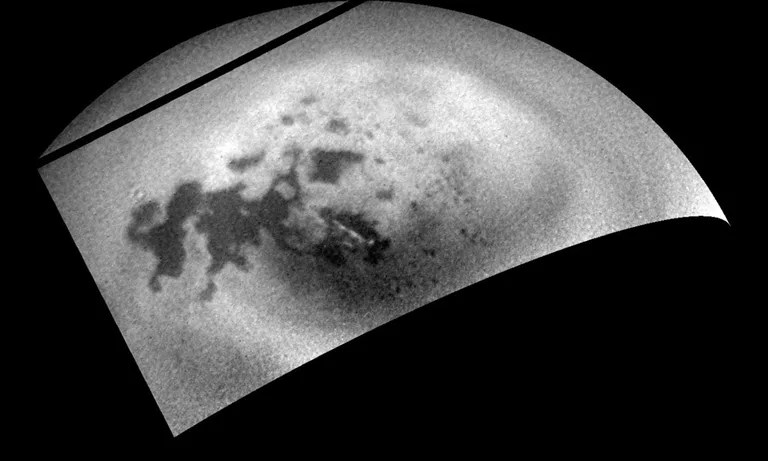1 min read

As the Cassini spacecraft sped away from Titan following a relatively close flyby, its cameras monitored the moon's northern polar region, capturing signs of renewed cloud activity. Image released Aug. 12, 2014
During this flyby, Cassini’s optical remote sensing instruments dominate during the approach period looking for weather activity and atmospheric properties. At closest approach, the Visible and Infrared Mapping Spectrometer (VIMS) examined the seas and lakes of the northern polar area of Titan, including Kraken Mare and Ligeia Mare. Finally, the Ultraviolet Imaging Spectrograph (UVIS) observed Titan’s southern hemisphere during the stellar occultation of Eta Ursae Majoris—also known as Alkaid, the end star in the handle of the Big Dipper.
Date
Sept. 22, 2014
Altitude
870 miles (1,400 km)
Speed
13,000 mph (5.6 km/sec)
Share
Details
Last Updated
Jan 24, 2024
Editor
NASA Science Editorial Team
Related Terms
Keep Exploring







